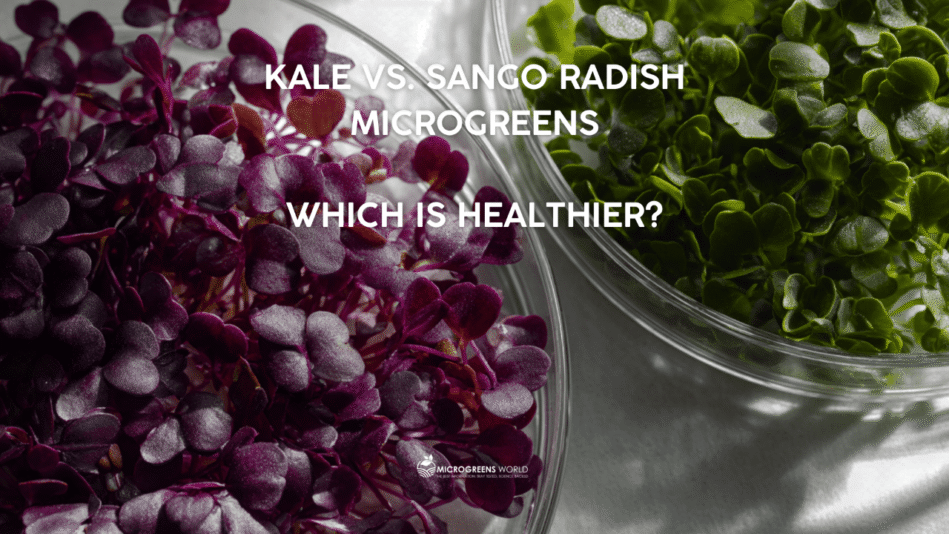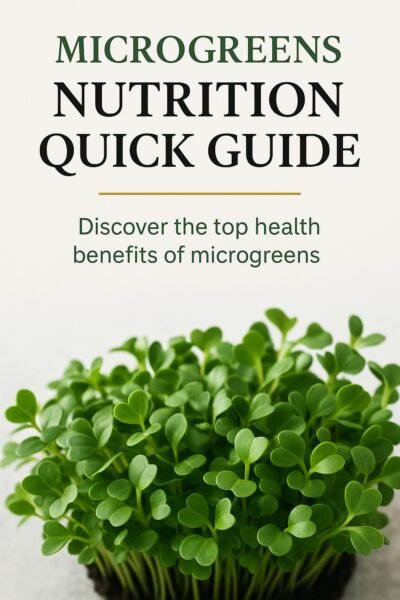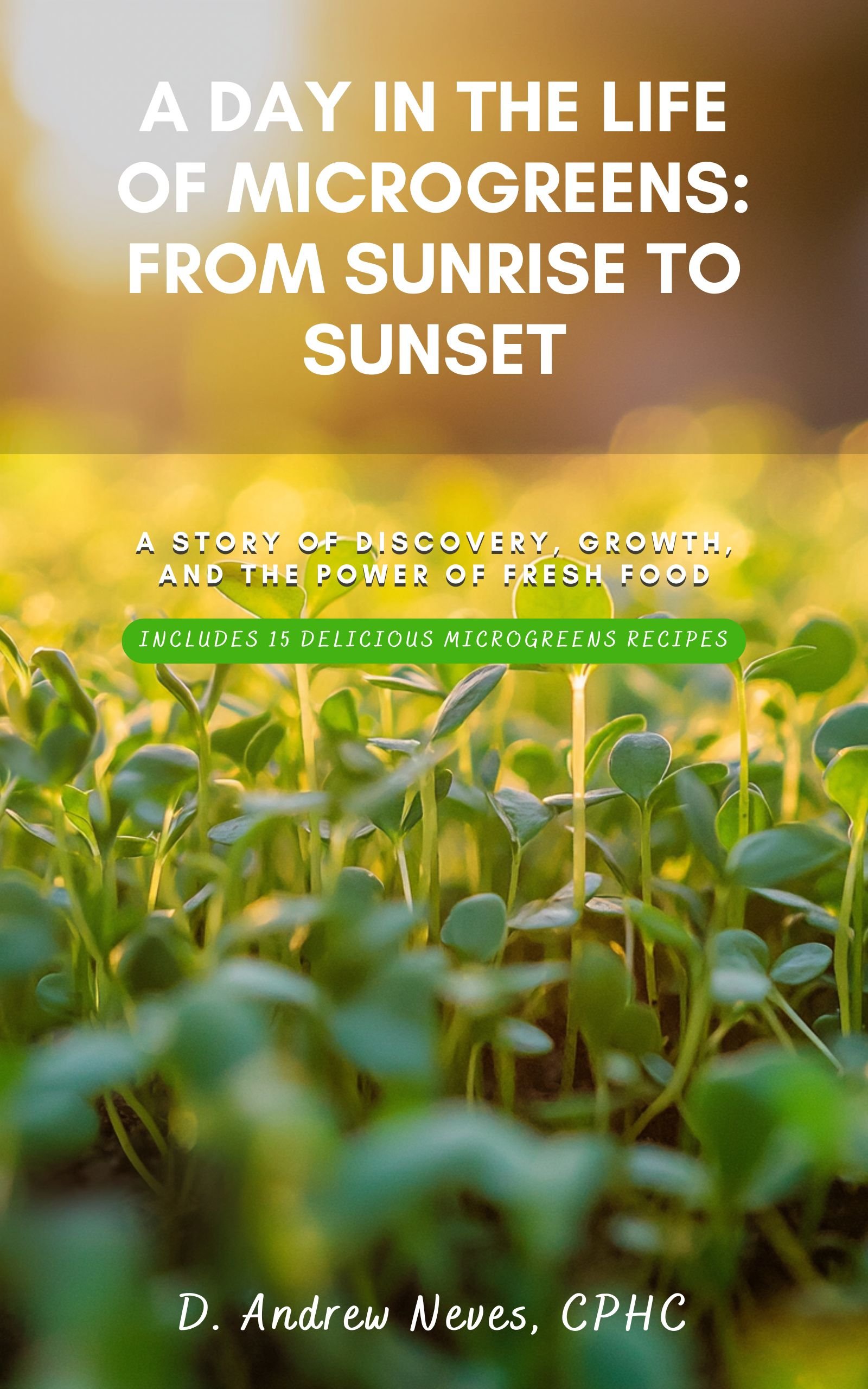While our ultimate guide to the healthiest microgreens provides a broad overview of the best options, a fascinating question often arises: when the top contenders go head-to-head, who wins? It’s a great question. Is it better to choose the tried-and-true nutrition of a green like Kale, or the vibrant, antioxidant-rich power of a colorful Sango Radish?
Kale microgreens excel in lutein (996 mg/100g) and beta-carotene (574 mg/100g) for eye health, with the highest calcium and potassium for bones. Sango Radish microgreens provide superior anthocyanin-based antioxidant activity and 58% α-glucosidase inhibition for blood sugar control and cellular protection.
Now, a new scientific study has done just that, putting two of the most popular and potent microgreen varieties—Kale and Sango Radish—in a direct, lab-tested battle. In this deep dive, we break down the fascinating results of this research to see which tiny green comes out on top in a scientific showdown.
Key Takeaways: Kale vs. Sango Radish
Based on a 2025 study in the journal Antioxidants, here are the definitive findings in the showdown between Kale and Sango Radish microgreens:
- Overall Winner: There is no single “best,” but a “best for a specific goal.” The choice depends entirely on your health priorities.
- Best for Eye Health & Minerals: Kale microgreens are the undisputed champion. They are a superior source of the carotenoids lutein and beta-carotene, and contain the highest levels of calcium and potassium.
- Best for Antioxidant Power: Sango Radish microgreens are the winner for overall antioxidant activity. Their high concentration of anthocyanins provides robust protection against cellular damage and may help in managing blood sugar.
- The Bottom Line: For targeted nutritional support (vision, bones), choose Kale. For broad-spectrum cellular protection, choose Sango Radish.
Go Deeper: Get the Free Kale & Radish Guide
You’ve just seen the highlights. Now get the whole story. To help you turn this powerful research into practical action, I’ve created a free, two-page Health Maximizer Guide.
Download it now to get:
✅ A beautiful side-by-side “Science Showdown” chart.
✅ Two exclusive recipes designed to unlock the unique benefits of each microgreen.
Enter your email below to get your free guide instantly!
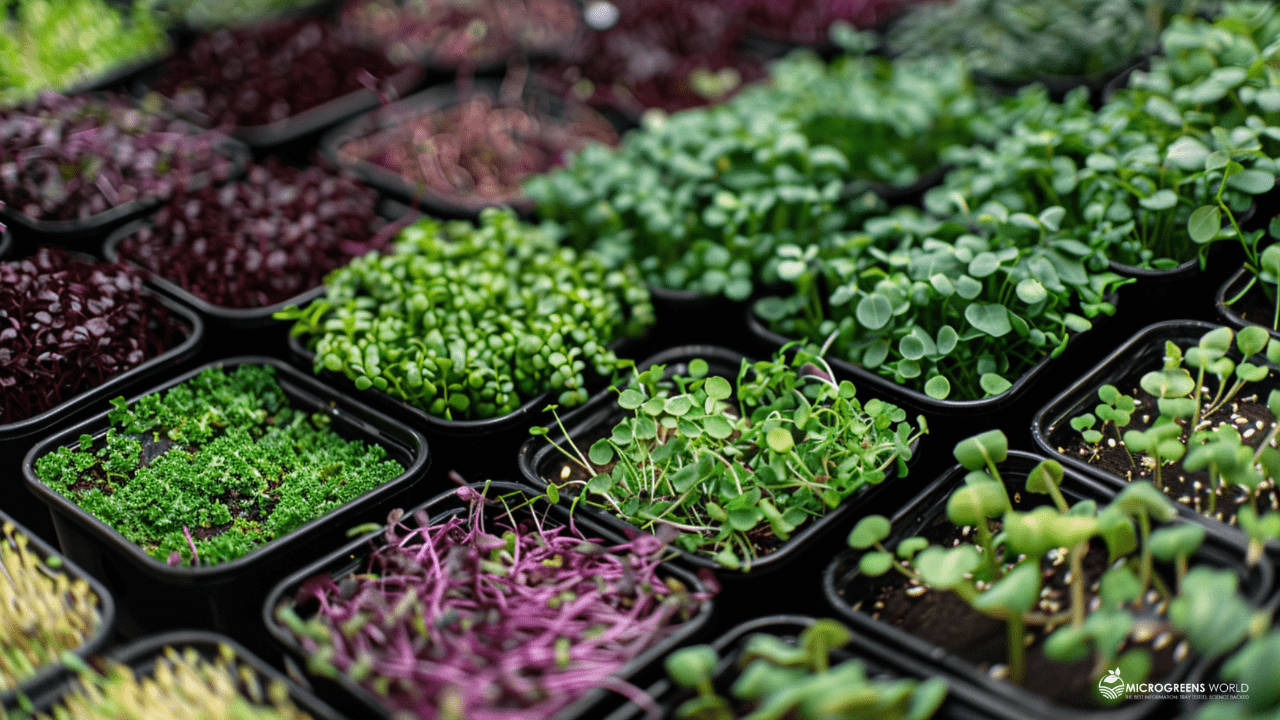
In the modern quest for a healthier life, we’re often told that enormous benefits come in small packages. We’ve seen it with chia seeds, acai berries, and goji berries. But perhaps no food embodies this principle more perfectly than the microgreen.
These aren’t just sprouts. Microgreens are tiny, tender, edible seedlings of vegetables and herbs, harvested just after their first true leaves have emerged. They’ve exploded in popularity, decorating the plates of high-end restaurants and filling containers in the produce aisle. We’re drawn to their vibrant colors, their intense flavors, and the promise that they are one of the most nutrient-dense foods on the planet.
This reputation is well-earned. Studies have confirmed that microgreens can contain anywhere from 4 to 40 times more vitamins and antioxidants than their fully grown counterparts. They are a triumph of nutritional efficiency, a tiny powerhouse of wellness in a single bite.
But this explosion of popularity has created a new, modern problem: the paradox of choice. You stand in front of the grocery display and see a dozen different kinds. Kale microgreens sit next to radish, which sits next to mustard and red cabbage. They all look healthy. But are they all equal? If you’re looking for the biggest nutritional punch, does it matter which one you choose? Is there a champion among them?
This is the exact knowledge gap a team of researchers at the University of Novi Sad in Serbia set out to fill. They designed a definitive head-to-head competition, a nutritional showdown, to compare some of the most popular microgreens from the Brassicaceae family, the nutritional dynasty that includes kale, radishes, cabbage, and mustard, and finally give us a clear answer to the question: who reigns supreme?
To find the true champions, the scientists knew they couldn’t just grab different microgreens from a market. The way a plant is grown—its soil, its light, its water—can dramatically affect its nutritional content. To ensure a fair and unbiased race, they had to become meticulous farmers themselves.
The team selected fifteen popular varieties and grew them all under identical, precisely controlled laboratory conditions. Each plant received the same amount of light (a 16-hour light, 8-hour dark photoperiod), the same peat substrate (at a pH of 5-6), and the same care for precisely 10 days. This created a level playing field in which the only variable was the plant’s genetic potential.
After 10 days, the microgreens were harvested, lyophilized (freeze-dried to preserve nutrients), and put through a grueling series of tests—a scientific gauntlet designed to measure every aspect of their nutritional power. This wasn’t just a simple vitamin check; it was a deep biochemical analysis:
- Antioxidant Levels: The researchers used multiple assays (like DPPH and ABTS) to measure the microgreens’ ability to fight “free radicals,” the unstable molecules that cause cellular damage and aging through a process called oxidative stress. Think of this as testing each microgreen’s power as a cellular bodyguard.
- Bioactive Compounds: Using a technique called High-Performance Liquid Chromatography (HPLC), they meticulously measured key healthy compounds like phenols, flavonoids, and carotenoids, the natural chemicals that give plants their color and provide most of their health benefits.
- Vitamins and Minerals: They conducted a full workup of essential nutrients, looking at everything from Vitamin C to crucial minerals like potassium, calcium, and iron.
- Functional Abilities: They went a step further, testing the microgreens’ extracts for specific health-promoting actions. They measured their ability to inhibit enzymes such as α-amylase and α-glucosidase (linked to blood sugar spikes) and even their ability to fight off harmful food-borne bacteria such as E. coli and Staphylococcus aureus.
Finally, using all this data, the scientists developed a standardized scoring system to rank the performers. When the dust settled, two clear champions emerged from the field.
While the study confirmed that all microgreens are indeed good for you, it revealed that two varieties stood head and shoulders above the rest, each with a unique and powerful profile: Kale and the purple-hued Sango radish.
They weren’t just a little better; they were nutritional powerhouses that dominated the competition in their own distinct ways.
Champion #1: Kale – The Guardian of Vision and Bone
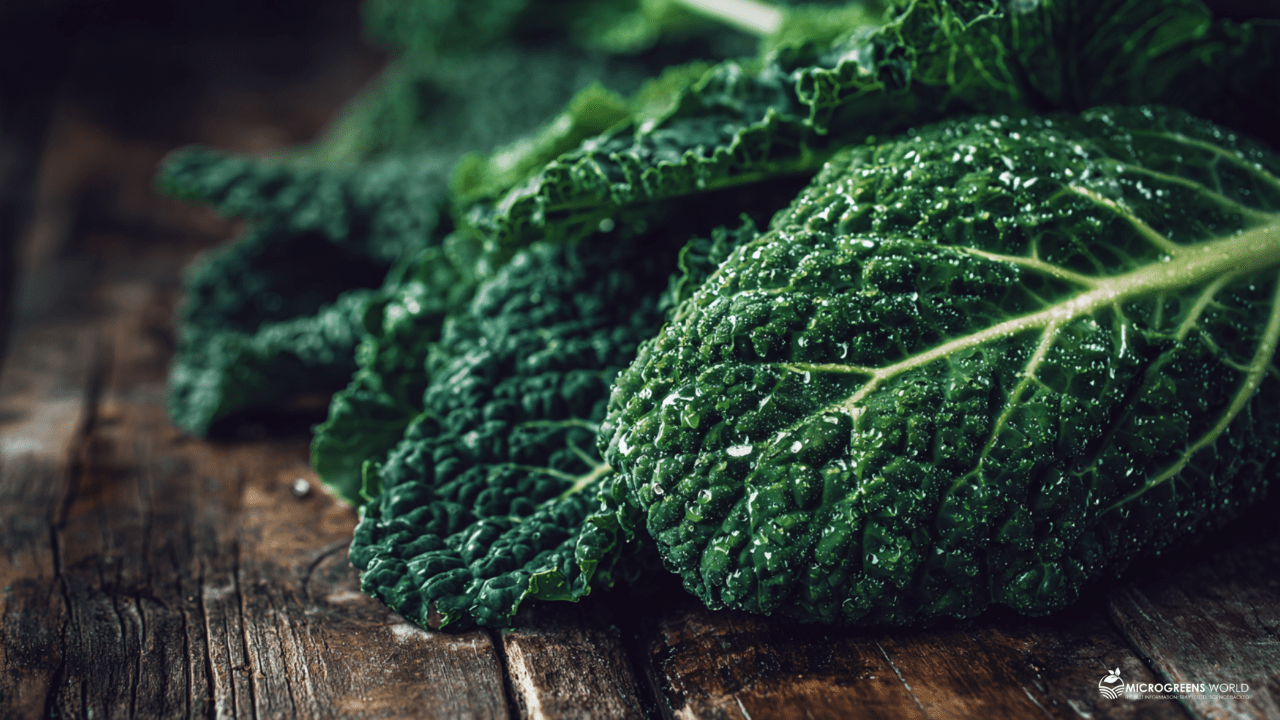
It’s no surprise that kale, the long-reigning king of the superfoods, would perform well in its micro-form. But the study showed precisely why it’s so exceptional. Kale microgreens were the undisputed winners in the carotenoid category.
Carotenoids are the pigments that give plants their bright colors. In the human body, they function as powerful antioxidants, and some can be converted into Vitamin A, an absolutely essential nutrient for vision, immune function, and cellular health. The study found that Kale microgreens were packed with two crucial carotenoids: lutein and beta-carotene.
According to the data, Kale microgreens contained a staggering 996.36 mg of lutein per 100g and 574.15 mg of beta-carotene per 100g. Lutein is famous for its role in protecting the eye’s macula from damaging blue light—a critical benefit in our screen-filled world—and is linked to a lower risk of age-related macular degeneration. Beta-carotene is the precursor to Vitamin A, supporting everything from night vision to a robust immune system.
But kale’s dominance didn’t stop there. It also proved to be a superior source of essential minerals. The tests revealed it had the highest concentrations of potassium (25,634 mg/kg) and calcium (19,179 mg/kg) among the top contenders. Potassium is vital for maintaining healthy blood pressure and nerve function, while calcium is the fundamental building block of strong bones and teeth.
In short, if you view food as medicine, kale microgreens are the targeted specialist for protecting your eyes and strengthening your skeleton.
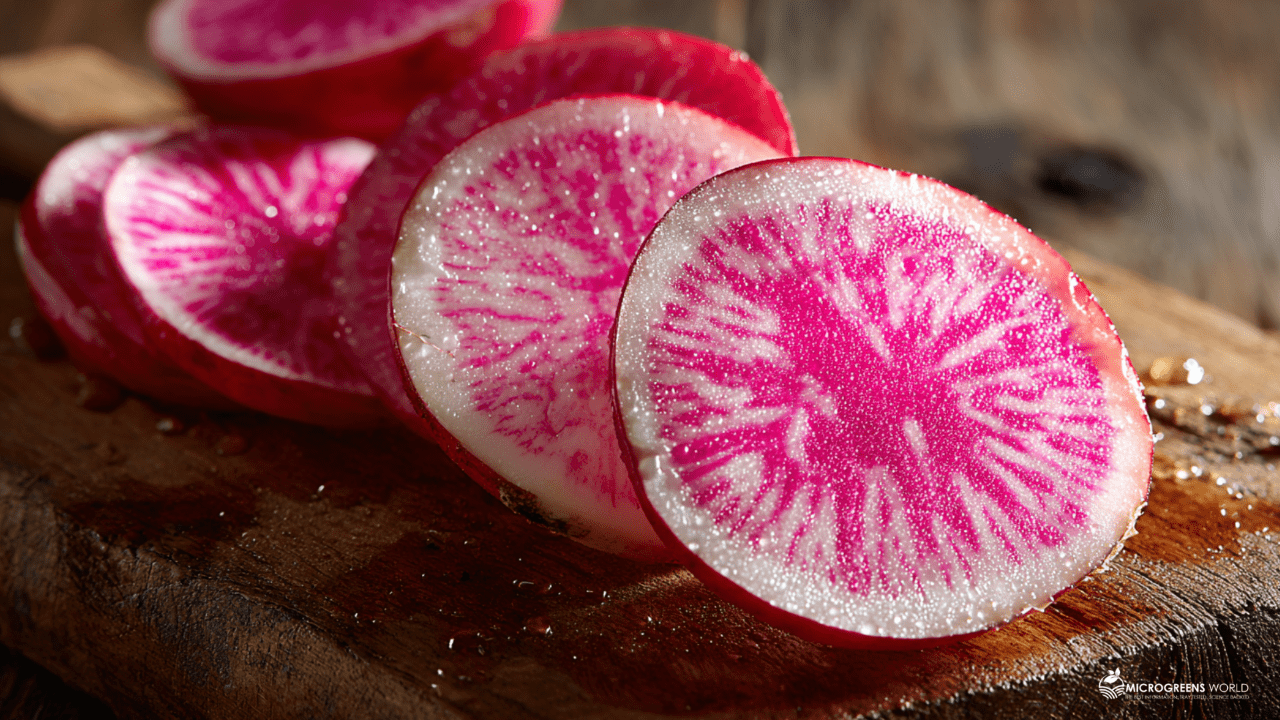
While kale excelled in specific nutrients, the Sango radish won on sheer, overwhelming antioxidant power. In test after test measuring its ability to neutralize damaging free radicals, Sango radish consistently outscored kale. Its vibrant purple color is a direct indicator of its strength, coming from a class of potent antioxidants called anthocyanins.
Think of oxidative stress as a form of “cellular rust,” a slow, accumulating damage caused by everyday life. If that’s the case, Sango radish is the most powerful rust-proofer.
Its benefits were broad and impressive. The study highlighted that Sango radish extract showed a stronger ability to inhibit α-glucosidase (by 58%), an enzyme in the gut that breaks down carbohydrates into simple sugars. Inhibiting this enzyme helps slow the release of glucose into the bloodstream after a meal. This action can help prevent energy spikes and crashes and supports overall metabolic health, making it a potentially valuable food for those managing blood sugar levels.
Furthermore, Sango radish demonstrated more potent antimicrobial properties. In tests against pathogenic bacteria, it showed a significantly larger zone of inhibition against E. coli than kale did, suggesting it has a powerful natural ability to combat certain harmful microbes.
If kale is the targeted specialist, Sango radish is the versatile, all-around champion, built to provide maximum protection against cellular stress.
The differences weren’t just nutritional; they were sensory. The researchers also conducted a fascinating analysis of the volatile compounds that give each microgreen its unique aroma and flavor. The results explained perfectly why these two winners are so different.
Pungent, sulfur-containing compounds like dimethyl sulfide and dimethyl trisulfide dominated the Sango radish profile. These are the same compounds that give garlic, onions, and, of course, radishes their characteristic sharp, intense, and spicy kick. This sulfur-rich profile is not just for flavor; these compounds (often derived from glucosinolates) are a key part of the plant’s defense system and are linked to many of its health benefits.
Kale, on the other hand, had a completely different aromatic signature. Its profile was dominated by siloxanes, known for their neutral, almost synthetic scents. This is why kale’s aroma is much milder, greener, and cleaner than a radish’s assertive punch. This distinction underscores the incredible diversity hidden within the microgreen world and influences how they can be used in the kitchen.
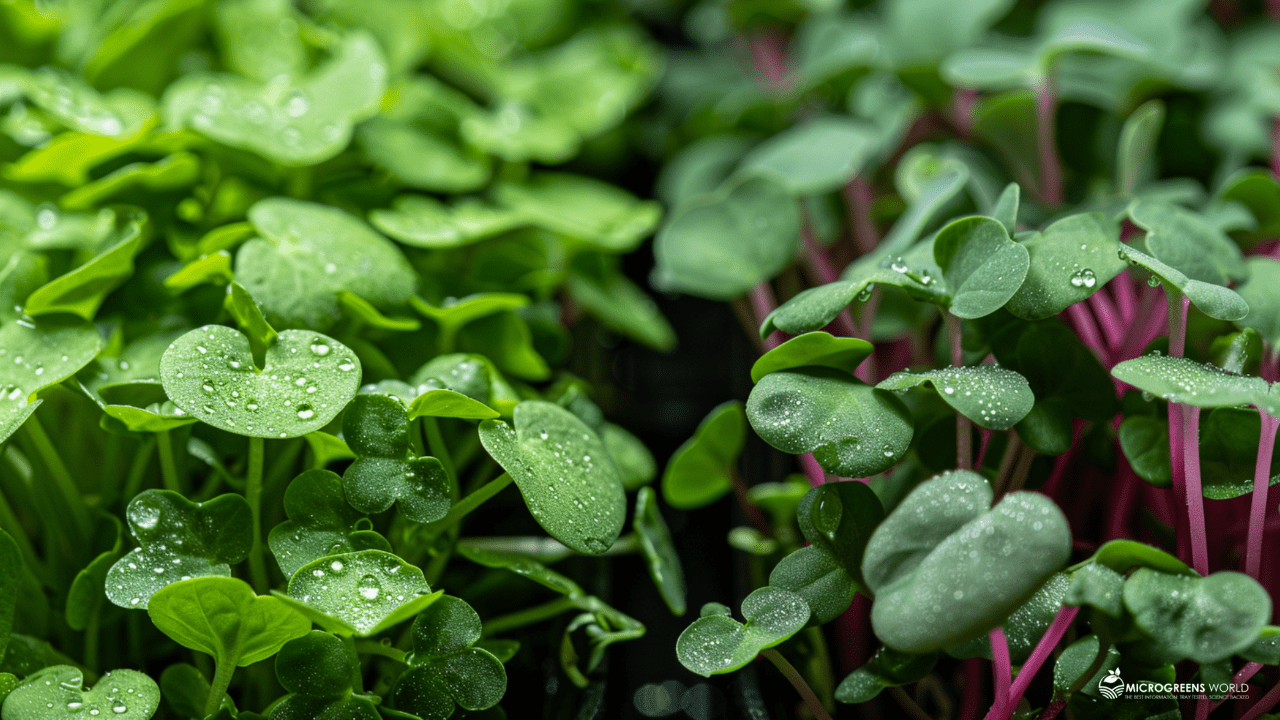
So, what does this all mean for you, standing in the grocery store? Thanks to this research, you can now move beyond guessing and make an informed choice tailored to your own health goals.
- Choose Kale Microgreens if… your primary goal is supporting eye health, strengthening your bones, and getting a significant, targeted mineral boost. They are a fantastic choice for smoothies, where their milder flavor blends easily.
- Choose Sango Radish Microgreens if… you are looking for the maximum possible antioxidant protection against cellular damage, a peppery flavor kick for salads and sandwiches, and potential benefits for blood sugar management.
- Want the best of both worlds? Mix them! A blend of kale and Sango radish microgreens would provide a broad spectrum of vitamins, minerals, and antioxidants, giving you the specialized benefits of kale alongside the powerful protective properties of radish.
This study does more than rank vegetables. It empowers us. It validates the idea that these tiny plants are one of the most efficient ways to nourish our bodies, and it provides a roadmap for choosing the right ones for our needs.
For a broader look at how these two champions stack up against 23 other varieties, be sure to explore our complete Guide to the Healthiest Microgreens.
Turn This Knowledge into Delicious Action
You’re now an expert on the unique powers of Kale and Sango Radish microgreens. Take the next step and bring this science into your kitchen.
Download our free, two-page Health Maximizer Guide, complete with a side-by-side comparison chart and two exclusive recipes designed to unlock the full potential of these incredible superfoods.
Enter your email to get your free guide and start eating healthier today!
Frequently Asked Questions
Which is healthier overall, kale or Sango radish microgreens?
Based on scientific analysis, neither is “healthier” overall, but they excel in different areas. Kale is superior for specific nutrients like carotenoids (for eye health) and minerals (calcium, potassium). Sango Radish is superior for broad-spectrum antioxidant power and potential metabolic benefits.
What are the main benefits of kale microgreens?
The main benefits of Kale microgreens are supporting vision and bone health. They are an exceptionally rich source of lutein and beta-carotene, which protect the eyes, and they contain high levels of calcium and potassium, which are essential for bone density and cardiovascular health.
What makes Sango radish microgreens so powerful?
Sango Radish microgreens derive their power from a high concentration of anthocyanins, a type of antioxidant that gives them their purple color. These compounds are highly effective at neutralizing free radicals, which cause cellular damage. This makes them a top choice for overall cellular protection.
Does this study mean other microgreens are not healthy?
Not at all. This study focused on finding the top performers in a head-to-head comparison. Nearly all microgreens are nutrient-dense and offer significant health benefits. This research simply helps consumers choose the best option for specific, targeted health goals.
References
Vučetić, A., Šovljanski, O., Pezo, L., Gligorijević, N., Kostić, S., Vulić, J., & Čanadanović-Brunet, J. (2025). A Comprehensive Antioxidant and Nutritional Profiling of Brassicaceae Microgreens. Antioxidants, 14(2), 191. https://doi.org/10.3390/antiox14020191
